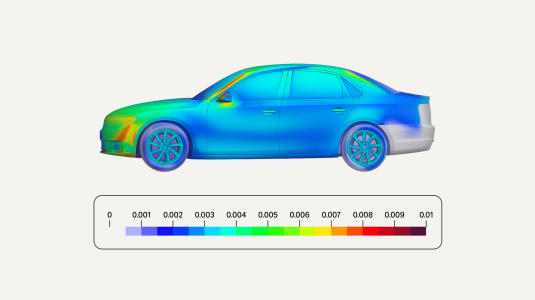Publishing articles in peer-reviewed journals is a big part of science. Published articles unveil new work, create an open exchange of ideas with other scientists, and help make knowledge the property of everyone. Moreover, the peer-review process ensures that published work is accurate and relevant.
Amazon scientists have a track record of publishing high-quality work. But principal applied scientist Javier Romero, whose focus is graphics and computer vision, is gaining notice both for the volume of his published work, and its quality. Since 2015 he has published 30 papers in a wide range of scientific journals that focus on computer vision and imaging. In 2019 he co-wrote two papers with Amazon-only authors. Also last year, his citation rate – based on Google Scholar – increased 30 percent, and is likely to climb further.
Romero is based in Barcelona within Amazon’s research unit called Body Labs, a startup it acquired in 2017. Romero’s current focus: using computer scans to extract body information from images submitted by customers. For Amazon, that’s useful for customers as the company aims to reinvent the online fashion shopping experience.
“In a physical store, customers are used to selecting several garments off the rack and trying them on in a dressing room to determine which ones fit best,” says Romero. “We aspire to create an online experience that gives customers confidence in choosing garments that will fit, without requiring the dressing room.”
Romero came to this work in a roundabout way; “lucky strikes and funny coincidences,” he calls it. An electronics student in 2006, he had to find a new professor to study with when his original professor left for Germany to watch that year’s World Cup. Romero ended up in Stockholm studying with a robotics expert, and earned his PhD in that field. “But,” he says, “I got a little tired of robotics. You’d go into the lab and find that the robot isn’t working, and then you’d spend the rest of the day looking at wires.”
Romero switched to computer vision, and after working on new ways to model human bodies, faces, and hands helped launch a company that sought to create high-definition body images from low-definition photos. He joined Amazon in 2017.
“We’re working on the next generation of body modeling,” he says. “A lot of current models are based on technology that’s 15 years old. The technology has changed a lot, and with the rise of deep learning we’re looking at ways to generate body models that are more realistic.”
He’s also anxious to share that knowledge with the science community. Romero says that publishing peer-reviewed papers confers key benefits for both the paper’s authors and those who read it.
For one thing, publishing helps identify top talent. Romero recalls investigating two companies he was considering joining. One had a stellar track record of publishing quality scientific papers. The other did not. “At the first one, I knew they were on top of their game, and this would be an exciting place to work,” he says. “I knew I’d be working with top talent.” Of the second, he says: “I was a little skeptical of them – I just couldn’t know the state of things in their lab.”
The lesson, he says, is that published papers are a window into the quality of the work of a person or a lab.
“That experience helped make me realize that publishing is crucial to attracting top talent. Given how competitive recruiting is, if you want to attract someone who is very, very good you need to show that you are doing good work. Publishing is an open window into that work.”
Given how competitive recruiting is, if you want to attract someone who is very, very good you need to show that you are doing good work. Publishing is an open window into that work.
Moreover, publishing fosters deeper connections to the scientific community. New algorithms in fields such as deep learning and computer vision are constantly pushing the boundaries of those fields. “We benefit so much from that, it would be unfair not to contribute back,” Romero says.
Finally, publishing is a way for scientists to contribute to the advancement of her or his field more broadly.
“Here at Amazon, part of the evaluation when being promoted from assistant to senior scientist is that you need to show you are having an impact in your field,” says Romero. “There’s no better way to demonstrate that than publishing articles that are peer-reviewed and get a good reaction from viewers.”
Romero’s work has won the admiration of fellow researchers and co-authors.
“Javier is excellent at explaining science in terms people from a variety of disciplines can grasp,” says Amazon Body Labs researcher Betty Mohler Tisch. “He’s passionate about not only making his research results clear, but understanding other’s needs and results in a way that he can collaborate and meet in the middle in terms of implementation.”
Amazon’s customer-centric approach to research, with its emphasis on applied science versus basic research, requires a working backwards methodology. Projects start with a customer pain point, and a description of how the solution will improve the customer experience.
Some of the papers Javier has contributed to:
FACSIMILE: Fast and Accurate Scans From an Image in Less Than a Second
D Smith, M Loper, X Hu, P Mavroidis, J Romero
Proceedings of the IEEE International Conference on Computer Vision, 5330-5339
Efficient learning on point clouds with basis point sets
S Prokudin, C Lassner, J Romero
Proceedings of the IEEE International Conference on Computer Vision …
SMPL: A skinned multi-person linear model
M Loper, N Mahmood, J Romero, G Pons-Moll, MJ Black
ACM transactions on graphics (TOG) 34 (6), 1-16
FAUST: Dataset and evaluation for 3D mesh registration
F Bogo, J Romero, M Loper, MJ Black
Proceedings of the IEEE Conference on Computer Vision and Pattern …
Keep it SMPL: Automatic estimation of 3D human pose and shape from a single image
F Bogo, A Kanazawa, C Lassner, P Gehler, J Romero , MJ Black
European Conference on Computer Vision, 561-578
“The papers we publish are often focused on how we are thinking ‘outside of the box’ to solve a particular customer problem,” Romero says. “The problems we are working on are not easy to solve and there is plenty of opportunity to innovate.”
As an example of innovative thinking, Romero co-authored a paper with Julieta Martinez, an intern from the University of British Columbia, that evaluated how to generate 3D body models from 2D images entitled, A Simple yet Effective Baseline for 3D Human Pose Estimation.
“People were coming up with very complicated models for doing this. We asked, ‘does it need to be so complicated?’ Julieta worked very hard on different possibilities that she could perform with very basic technology and with much better results.”
Romero’s most-cited paper – “SMPL: A Skinned Multi-Person Linear Model” – was published in 2015 and has become a standard reference for researchers working on body models. “It’s a simple idea, and easy to implement,” says Romero. “But also gives better results than anyone had previously achieved.”
As any writer knows, churning out high-quality work isn’t easy – especially when juggling a challenging job as a scientist. Romero says that deadlines help him focus and allocate the time needed to complete a paper. “I have a harder time finishing things that are open-ended,” he concedes.


















